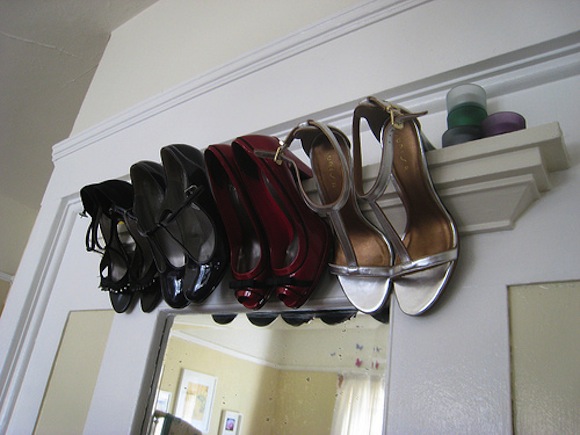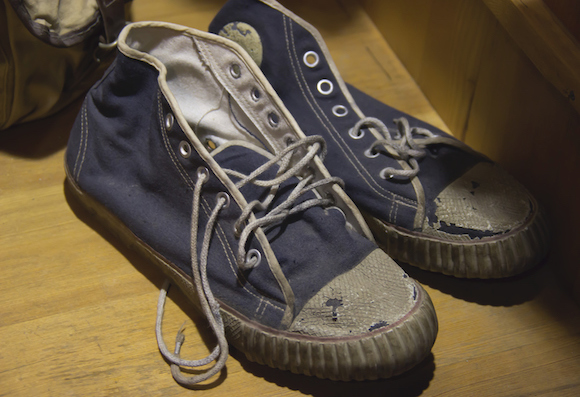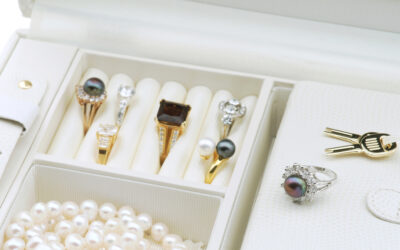If your shoe collection has been growing over the years, but your short-term storage is getting a little cramped, it may be time to consider some long-term shoe storage solutions. Here are some storage tips so you can give your collection of kicks the care and space they deserve.
Prepare Your Shoes For Storage
There are a few things you will need to do to prepare your shoes for long term storage:
- Start by sorting your shoes into similar groupings (tennis shoes, dress shoes, workout shoes, etc)
- Thoroughly clean the surface and insides of the shoes.
- Remove laces
- Condition and polish leather shoes. Conditioning your shoes will prevent them getting brittle and cracked during storage.
To help maintain the shape of your nicer shoes, insert a shoe tree into them or stuff them with acid-free tissue paper. Cedar shoe trees absorb any moisture that may be present in your shoe while deodorizing and deterring pests at the same time.
Pack Your Shoes For Storage
When planning on storing shoes for an extended period of time, it is important to choose a suitable container to pack your shoes in.
Choose the option below that works best for your unique situation:
Original Shoe Boxes
- Pros: The cardboard box that your shoes were originally packaged in is the cheapest option for a shoe storage vessel. The boxes stack nicely and uniformly, and labeling makes it easy to find the shoes you are looking for.
- Cons: The cardboard can be flimsy and create arid conditions that can make your shoes dry and brittle. Rodents and pests can easily infiltrate cardboard boxes, and may even be attracted to them.
Stackable Plastic Boxes
- Pros: Clear, stackable boxes are very sturdy and can stack high. The clear box allows you to see which pair of shoes are in each box.
- Cons: The tight locking lids on plastic storage boxes can trap moisture inside the box. To avoid this, dry your shoes thoroughly before putting them in plastic boxes and put silica gel packets inside your shoes to dissuade moisture buildup.
Shoe Organizers
- Pros: There is a wide variety of inexpensive shoe organizers you can purchase that fit your specific needs for size and space. Shoes are easily accessible when they are in an organizer in your bedroom or closet. Over the door and hanging organizers don’t need any floor space to be used.
- Cons: Stand up organizers can take up valuable real estate in your home and collect dust.
Organize Your Shoes
Anticipate your shoe needs and organize your shoe collection by frequency of use and the current season.
Keep the shoes that you use daily in an easily accessible spot like a shoe rack by the front door. Store shoes that you wear only for special occasions on a shelf in the closet or in a temperature controlled self-storage unit.
Consider the functions of the shoes you frequently use compared to the location they are stored in. Place house shoes close to your bed, put gardening or mowing shoes by the back door or in the mud room, and date night shoes in an easily accessible shoe organizer in your bedroom.
Organize your shoes by the season–If it’s winter time, keep your summer shoes in storage, and in the summer, store your winter boots.
Choose an Optimal Storage Location
Storing shoes on a shelf in the closet or a shoe rack works great for the shoes that you frequently wear, but consider putting the shoes you only wear a few times a year into a self-storage unit if you don’t have room anywhere else.
Climate-controlled self-storage provides the optimal conditions for storing shoes long term. The shoes will be secure and you will avoid damage from heat or moisture. As a bonus, you free up some of that precious closet space back at home. Look for a self-storage unit that is big enough to accommodate the space you need for your shoes and other seasonal items
Things to Watch Out For When Storing Shoes
- Pests. Rodents will chew through cardboard shoe boxes and shoes to get nest material. Watch out for signs of rodents like droppings and chew marks on shoe boxes in your closet or storage unit. Store shoes in lidded plastic containers to prevent rodents and bugs from being able to access your shoes.
- Mildew. Mildew can wreck a nice pair of shoes and spread like wildfire. Put silica gel packets inside your shoes before putting them into storage. Acid-free paper and shoe trees also help absorb excess moisture.
- Heat damage. Intense heat can dry out and warp your shoes, making them brittle, misshapen, and unwearable. Heat can also melt glues that hold parts of shoes together. Keep shoes out of the garage and attic, and use a climate controlled storage option for long term shoe storage.
Considerations For Different Types of Shoes
- Leather shoes. Leather is one of the most common materials used in many dress shoes and boots. Clean and condition leather shoes before storing and help them maintain their shape by using a shoe tree or stuffing them with acid-free tissue.
- High heels. Helen Stringer recommends using your closet’s crown molding as a makeshift ledge for hanging your heels.
- Sneakers. Clean and remove the laces from sneakers before putting them into long term storage. If you have used your sneakers to run or workout in, they may need to be deodorized before storing.
- Flip flops. Since flip flops are so light, you can fit multiple pairs in one box while storing. Flip flop hangers can be hung in the closet or on a door to store multiple pairs.
- Work boots. Store boots upright and fill them with plastic bottles or boot molds to help them maintain their shape.
- Kids shoes. Unused toy bins, chests, and ottomans make great locations for storing little shoes.
Frequently Asked Questions
Can I keep my shoes in the garage or attic for long term storage?
Due to poor insulation, attics and garages are typically not a good spot to store shoes long term. We recommend using a climate-controlled self-storage unit.
How long can shoes be stored?
Depending on the material and the location, shoes can be stored for decades. Optimal conditions are the key to preserving shoes for the long-term.
Should I throw out my show boxes?
Shoe boxes are a good way to store shoes on a budget, but if you're looking for longer-term storage, we suggest opting for individual, locking-lid plastic storage boxes for your shoes. Otherwise, only keep shoe boxes if you plan to resell them later.





